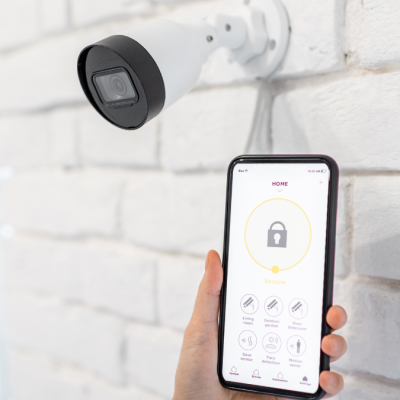Advantages of a mobile workforce
One advantage of having a mobile workforce is increased productivity. Studies have shown that employees who are able to work from home or remotely are more productive than those who work in a traditional office setting. This is because remote workers are less likely to be distracted by office chatter and are able to create a more relaxed and productive work environment.
Lower Overhead Costs:
One of the biggest advantages of a mobile workforce is that it eliminates the need for physical office space. This means that businesses can save money on rent, utilities, and associated costs. Additionally, companies can save money on office supplies and equipment, as many remote workers use their own devices.
Access to a Larger Talent Pool:
With a mobile workforce, businesses have access to a much larger pool of talent. This is because employees are no longer limited by geography and can work from anywhere in the world. This means that businesses can hire the best talent, regardless of location.
Increased Employee Satisfaction:
A mobile workforce also leads to increased employee satisfaction. Studies have shown that remote workers are generally happier and more fulfilled than those who work in a traditional office setting. This is because they are able to exert more control over their work environment and schedule, which in turn leads to a better work-life balance.
Challenges of a mobile workforce
Communication:
One of the biggest challenges of a mobile workforce is communication. When employees are not in the same physical location, staying in touch and communicating effectively can be difficult. This is why it is essential for businesses to invest in tools that help remote workers communicate and collaborate effectively.
Managing Remote Workers:
Another challenge of a mobile workforce is managing remote workers. This can be difficult because remote workers are not always available in real-time and may have different work schedules. Businesses must have clear policies and procedures in place to ensure that remote workers are held accountable and are able to carry out their responsibilities.
Security:
With a mobile workforce comes risk of data breaches and other security issues. This is because remote workers are often using their own devices to access sensitive information. Businesses must ensure that they have strong security protocols in place to protect their data and systems.

What can you do?
The mobile workforce trend is changing the way companies approach customer service and communication. With mobile devices and technology, employees can access important information and communicate with customers more quickly and effectively, which can improve customer satisfaction and loyalty. In addition, mobile technology can help companies respond to customer needs more efficiently and reduce the time it takes to resolve issues.
This trend is also changing the way companies approach staffing and recruitment. With mobile devices and technology, employees can work from anywhere, which can help companies find the best talent and reduce the costs associated with physical office space. Additionally, mobile technology can help companies manage employee schedules and workloads more effectively, which can improve employee satisfaction and reduce the risk of burnout.
Strategies for a successful mobile workforce
a. Clear Communication Policies
When it comes to a mobile workforce, clear communication is crucial. It’s important to set clear policies regarding the communication methods employees should use when working remotely. This could include emails, instant messaging, video conferencing, or any other communication platform. To ensure seamless communication, it’s important to make sure that everyone is on the same page and knows what is expected of them.
To manage remote workers effectively, businesses must set clear expectations for their work. This includes outlining responsibilities, setting deadlines, and establishing clear communication channels. Businesses must also ensure that remote workers are able to access the tools and resources they need to carry out their jobs effectively.
c. Cloud Computing
Cloud computing has become an indispensable tool for businesses looking to support their mobile workforce. By storing data in the cloud, employees can access and share files from anywhere, at any time. This eliminates the need for physical storage devices and makes it easy for remote workers to collaborate on projects.
d. Secure Mobile Devices
Mobile devices are essential for a mobile workforce, but they also represent a potential security risk. Companies must have robust security measures in place to protect sensitive data from theft or loss. This could include encryption, password protection, and remote wiping capabilities. It’s also important to train employees in how to keep their devices secure, including proper password management, avoiding public Wi-Fi, and awareness of phishing scams.
e. Project Management Tools
Project management tools can be a game changer for remote workers, helping to keep them organized, informed, and on task. Popular project management platforms include Trello, Asana, and Basecamp. These tools can help teams stay on top of their work by tracking progress, setting deadlines, and assigning tasks.
f. Flexible Schedules
A mobile workforce offers employees the opportunity to work from anywhere, at any time. This makes it important for companies to offer flexible schedules to allow workers to balance their work and personal lives. Flexible schedules can increase job satisfaction, improve work-life balance, and boost productivity.
g. Encourage Collaboration
Collaboration is key to success in any business, and this is especially true for remote workers. Companies should encourage collaboration among employees, even if they are working from different locations. This can be achieved through regular team meetings, online forums, or virtual collaboration tools. By promoting collaboration, businesses can foster a sense of community among remote workers and improve their overall performance.
h. Performance Management
Like any other employees, remote workers must be held accountable for their work. Companies should establish a clear performance management system, which includes regular check-ins, performance reviews, and goal setting. This will help to ensure that remote workers are on track to meet their targets while also providing an opportunity for feedback and improvement.

In conclusion, although a mobile workforce can bring significant benefits to businesses, it requires careful planning and management to ensure success. By following the strategies outlined above, companies can support their remote workers and reap the rewards of a flexible and productive workforce. Companies that invest in their mobile workforce will reap the benefits of increased productivity.





